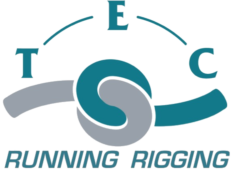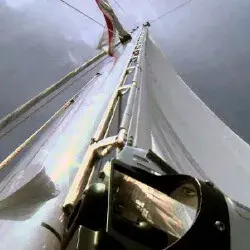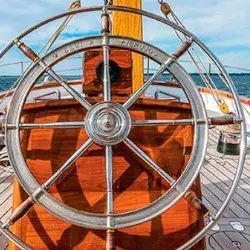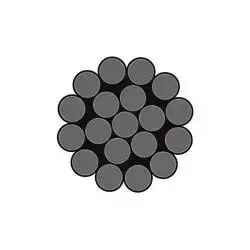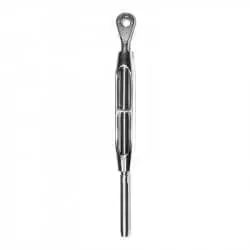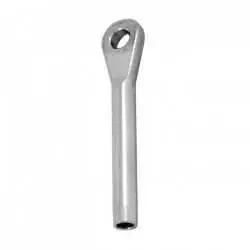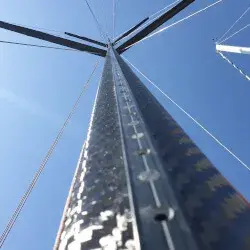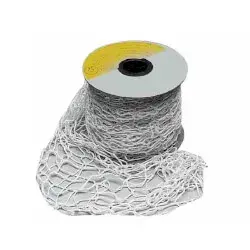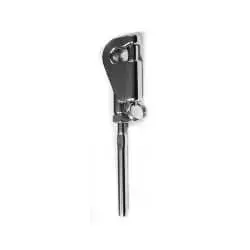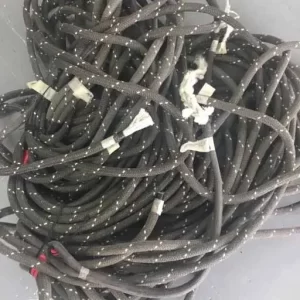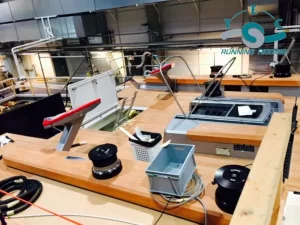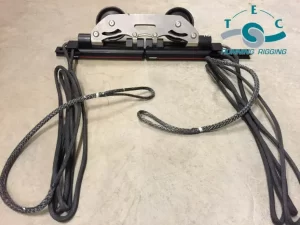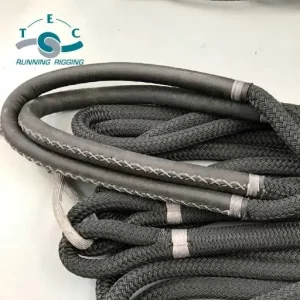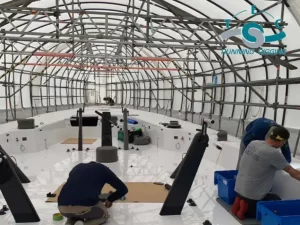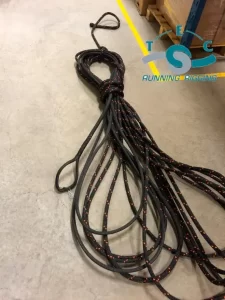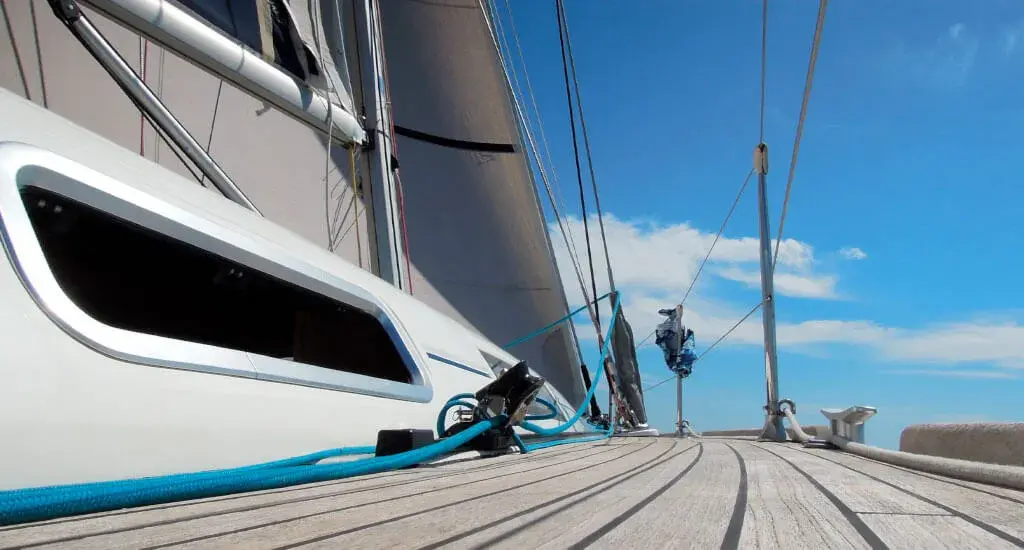
Running Rigging on a sailboat
The Path to Complete Control of Your Boat
on the 7 Seas
We specialize in both standing and running rigging, cables, tensioners, lifelines, custom mobile tackles, halyards, sheets, and much more, providing everything you need to hoist, adjust, and control your sails with ease
¡Contact us!
Strengthen the Backbone of Your Boat
Nautical Services by Running Rigging
As a skipper, you know that your boat’s performance is crucial to enjoying optimal navigation on the open sea. Imagine nautical rigging as the backbone of your boat: the pillar that ensures maximum performance and stability. From our nautical company in Mallorca, we are committed to advising you so that you can keep your boat in good shape and enjoy the sea breeze to the fullest. What problem can we help you with?
Samples of Our Running Rigging Work
Hi there! We are T-E-C Running Rigging, and it’s time for you to learn about how we work. Our different running rigging services focus on providing you with the best advice, materials, and guarantees on the market.
Here are the steps we follow to ensure that your boat gets the best:
After you send us an email, we’ll respond within a maximum of 72 business hours
- Identification of needs: We’ll contact you to learn all about your boat and what you need.
- Vessel analysis: Our experts analyze every detail to find the best solution for you.
- Budget preparation: Once we have the solution, we provide you with a detailed budget for your project with no commitment.
- Agreement on timelines: If you honor us with your project, we inform you of the time needed to carry it out.
- Material production: Our experts in standing and running rigging get to work.
- Material delivery: We make sure that the material arrives in your hands on time and in perfect condition.
- Installation and testing: If necessary, we install it for you and accompany you on sea trials to ensure proper functioning.
- Guarantee: We offer a guarantee that starts after the reception of the material or the installation and sea trials, depending on the project.
Do you want to experience the best in running rigging? Contact us today and discover why we are market leaders. Additionally, please remember that our advice and consulting services are 100% free and do not entail any obligation or commitment to hire our services. We look forward to hearing from you!
¡Contact Us!
MANUFACTURE AND DESIGN OF RUNNING RIGGING
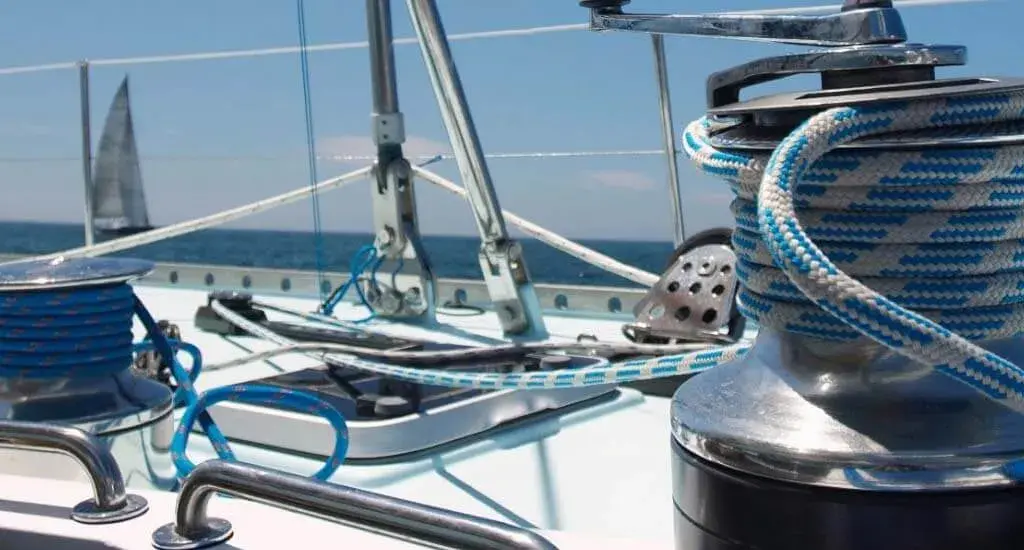
Running rigging is the DNA of your boat: unique, providing the strength and stability needed to navigate rough waters.
At T-E-C, we specialize in the manufacture of all types of custom-made mobile rigging and ropes for hoisting, adjusting, and controlling sails.
From material selection to the final finish, every detail is meticulously taken care of to ensure that your boat glides smoothly through the waves. Don’t wait any longer to give your boat what it deserves!
¡Contact Us!
RIGGING MANUFACTURING AND DESIGN
The standing rigging is the soul of your boat; the essential element that holds the masts and sails, such as cables, ropes, tensioners and terminals that keep the mast in place, providing stability and security against any wave.
At T-E-C, we are experts in the manufacturing of marine-quality cables, bow stays, and custom-made terminals.
We ensure that each element meets the strictest European standards of quality and resistance, so that it is able to withstand the strongest waves. Do you want to make sure that the standing rigging of your boat lives up to your expectations?
¡Contact Us!

MANUFACTURE OF SAILING SHIP CABLES

The cables on your sailing ship are like the strings on a virtuoso musician’s instrument; they are responsible for supporting and tuning the sails to navigate in complete harmony.
At T-E-C, we are 100% specialized in the manufacture of custom marine cables that meet the strictest quality criteria in Europe.
Each cable we make is designed to withstand the most intense forces of the most unpredictable wind, so you can feel the excitement and freedom of sailing the seas. Would you like to enjoy your sea voyages with the peace of mind of knowing that your sails are well supported and tuned? Contact us and let’s make that dream sailing experience a reality.
¡Contact Us!
FORESTAY CABLES
The metallic nerve is the forestay cable, the muscle that keeps your sailboat tensioned and gives it the necessary force to navigate smoothly through the most challenging seas. At T-E-C, we understand the importance of having a strong and durable forestay cable that can withstand the harsh weather conditions.
In our workshop in Palma, we manufacture forestay cables specifically designed for both sailboats and dinghies, using lightweight stainless steel cables and manufacturing techniques to create cables that are resistant, durable and efficient.
With our forestay cable, you can be sure that your boat will have the necessary support to take your nautical adventures to a new level. Do you want your boat to have the strength and vigor it needs to navigate the seas?
¡Contact Us!

CUSTOM NAUTICAL SHROUDS DESIGN AND CREATION

Shrouds are the faithful guardians that protect the integrity of your boat in the most challenging tides.
At T-E-C, we are naval craftsmen, masters in creating the best custom shrouds, both single and double, that perfectly fit the rigging of your boat and are as reliable as a Swiss watch.
Each shroud is a reliable, sturdy, and durable warrior that, together with the stays, forms an unbeatable team to support and secure your vessel’s rigging. Would you like to sail with the peace of mind of knowing that your shrouds meet the highest quality standards?
¡Contact Us!
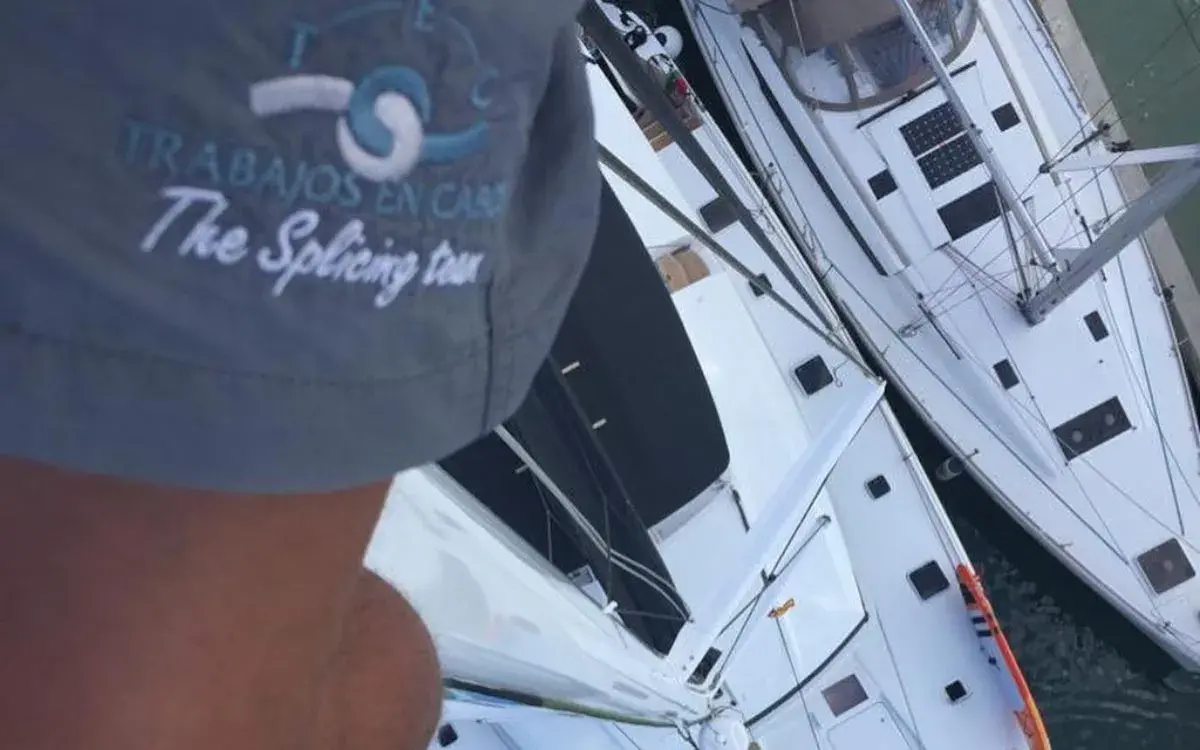
Can’t find what you need?
Nautical rigging
advisory service in Palma de Mallorca
¡Contact Us!
This consultancy is 100% free and does not involve any obligation or commitment to hire any of our different services
Most common doubts resolved by T-E-C about running rigging on a sailboat
At Trabajos en Cabos, we want to ensure that you have no doubts about what running rigging is and why it’s important to hire a service for your boat. That’s why we’ve put together a collection of the most frequently asked questions.
What is running rigging?
Running rigging refers to the movable elements of a sailboat’s rigging that are used to control the sails and the boat’s direction. This includes all the ropes, lines, and cords that are used to hoist, adjust, and control the sails and the tension of the rigging.
The running rigging is divided into different systems, each of which has a specific function, such as:
–The mainsail system, which is used to hoist and lower the mainsail and adjust its tension.
–The boom system, which is used to control the position of the boom and the tension of the jib sail.
-The genoa or jib system, which is used to hoist and lower the jib sail and adjust its tension.
-The sheets system, which is used to control the position of the sails relative to the wind and adjust their shape.
Running rigging is essential in sailing, as it allows the sailor to control the position and angle of the sails precisely and effectively to make the most of the wind’s force and the boat’s speed.
What are the main functions of the running rigging on a boat?
The running rigging has several main functions on a sailing vessel:
1. Control the sails, allowing the navigator to adjust their position and angle to determine the direction and speed of the vessel.
2. Adjust the tension of the sails, which is crucial to maintain the proper shape of the sail and achieve the best speed and efficiency of the vessel.
3. Hoist and lower the sails, which is necessary at the beginning and end of a navigation, to adjust the amount of sail to the wind conditions, and to change sails when necessary.
4. Maneuver the vessel, allowing for changes in direction and position of the sails as needed.
5. Brake the vessel, either by releasing the tension on the sails or using specific brake lines.
What are the different types of nautical ropes used in running rigging?
There are several types of nautical ropes used in the running rigging, and the choice of each will depend on their function and the characteristics of the boat. Some of the most common types are:
Halyards: These are long and strong ropes used to lift the sails. They are designed to support the weight of the sail and withstand the tension to which they are subjected.
Sheets: These are shorter and more flexible ropes that allow for the control of the angle and tension of the sails. They are essential for navigation control, as they allow for the adjustment of the amount of sail exposed to the wind.
Tacks: These are ropes used to fasten the sail to the mast or stay. Additionally, they are also used to adjust the tension in the lower part of the sail.
Reefing lines: These are ropes that allow for the reduction of the sail surface depending on the weather conditions. They are used to decrease the speed of the boat and make navigation safer in strong winds.
Cunninghams: These are rigging ropes used to control the shape of the sail. They allow for the adjustment of the curvature of the sail to obtain the best efficiency and speed of the boat.
Outhauls: These are ropes used to change the tension and shape of the foot of the sail.
Vangs: These are ropes that connect the boom to the mast and control the shape of the sail by controlling the tension of the leech and the twist of the sail.
Backstays: These are ropes used to keep the mast in a vertical position. They are attached to the mast and fixed at different points of the boat to provide additional support.
Running rigging: This refers to all the ropes used for the manipulation of the sails and is found spread throughout the deck. These ropes are used for navigation maneuvers, such as tacking or gybing.
Spinnaker sheets: These are special ropes used to control the spinnaker, an asymmetric sail used in downwind sailing. These ropes are very long and extend from the lower corner of the sail to the back of the boat.
What is the difference between normal nautical rigging and running rigging?
The main difference between normal nautical rigging and running rigging lies in their function and location on the vessel.
Normal nautical rigging refers to the ropes and cables used to hold the mast, sails, and other components of the vessel in place. These ropes are permanently fixed in place and are usually of larger diameter and strength than the ropes used in running rigging. Normal nautical rigging can also include steel cables and other fastening elements used to secure the hull and overall structure of the vessel.
On the other hand, running rigging refers to the ropes and cables used to adjust and control the position and tension of the sails based on the wind and navigational conditions. These ropes are used temporarily and are constantly adjusted during navigation. Running rigging includes ropes such as halyards, sheets, downhauls, and others that are used to adjust the position and shape of the sails to maximize the efficiency and speed of the vessel.
What benefits does rigging offer in boating?
Rigging, including running rigging, offers several benefits in nautical activities, including:
Sail control: running rigging allows sailors to adjust the position and tension of the sails, which enables them to control the speed and direction of the vessel and adapt to weather and environmental conditions.
Improved efficiency: by adjusting the position and shape of the sails, rigging enables the vessel’s aerodynamics to be optimized, resulting in greater efficiency and speed.
Safety: properly designed and maintained rigging ensures that the sails are securely fixed and that the mast and other components of the vessel are in place, reducing the risk of accidents during navigation.
Greater comfort: well-designed and maintained rigging makes sail adjustment easier and less stressful for sailors, contributing to a more enjoyable sailing experience.
Increased durability: proper and well-maintained rigging can last for many years, representing a cost-effective long-term investment for boat owners.
Why is standing and running rigging important in nautical rigging?
Standing and running rigging is an important part of nautical rigging, as its function is to keep the mast and other structural components of the vessel in place. Standing rigging refers to the steel cables that hold the mast vertically, while running rigging refers to the cables that hold the horizontal spars, such as the booms and yards.
Standing and running rigging is important because:
Ensures safety: standing and running rigging keeps the mast and other components of the vessel in place, ensuring the safety of the crew and the vessel during navigation.
Contributes to stability: by keeping the mast and other components in place, standing and running rigging helps maintain the stability of the vessel on the water.
Allows control of sail angle: running rigging, along with other components of the rigging, allows for control of the sail angle, which is essential for navigation and vessel control.
Supports sail tension: standing and running rigging supports the tension of the sails during navigation, ensuring that the mast and other components do not deform or break due to tension.
Improves navigation efficiency: proper and well-maintained standing and running rigging contributes to more efficient and faster navigation, which is important for sailors looking to improve their performance on the water.
What is the most important thing in the manufacture and design of labor rigging?
The most important aspect in the manufacturing and design of rigging gear is to ensure the safety of the crew and the resistance of the components to the forces they will be subjected to during navigation.
It is necessary to select appropriate materials, ensure quality manufacturing, and maintain proper maintenance to avoid rigging failures and prevent accidents. Additionally, efficiency in navigation and sail handling must be considered when designing rigging gear.
The most suitable materials for rigging gear are those that offer high tensile and abrasion resistance, as well as good durability and resistance to UV rays.
Some of the most commonly used materials in rigging gear are stainless steel, aluminum, kevlar, dyneema, polyester, and nylon.
Each material has its own advantages and disadvantages in terms of strength, weight, stiffness, elasticity, and cost, so it is important to select the appropriate material for each rigging component according to its specific needs and budget. It is also important to consider the compatibility between different materials used in rigging gear to prevent corrosion and premature degradation.
What is the most important thing in the manufacture and design of standing rigging?
In the manufacture and design of standing rigging, the most important thing is the strength and durability of the material used. The standing rigging is designed to support the load of the masts and the tension generated during navigation, so it must be strong enough to withstand these forces without breaking or deteriorating prematurely.
The most commonly used material for standing rigging is stainless steel, as it offers high tensile strength and corrosion resistance. It is also important to ensure that the standing rigging is installed correctly and that the tension has been properly adjusted, to ensure that the structure of the boat remains stable and safe.
Another important aspect in the manufacture and design of standing rigging is regular inspection and proper maintenance, to detect and repair any damage or wear before it becomes a major problem.
Do you offer nautical services only on the island of Mallorca?
Absolutely not! In our business, we do not limit ourselves to offering services only on the island of Mallorca. In fact, we are proud to say that we serve clients throughout Spain, including the beautiful Canary Islands, and worldwide, from Europe to Australia and the United States.
And the best part is that we offer free shipping on our entire range of nautical cable materials, standing and running rigging, and everything else you need for your running rigging service. Don’t wait any longer to get the best products for your vessel!
With this service, you will have the peace of mind of knowing that your boat is ready to catch the winds
Don’t settle for generic solutions, choose excellence with our services of standing and running rigging, cable manufacturing, tensioners, guardrails, and custom-made movable rigs!
Request your running rigging quote now and discover how we can help improve your vessel!
This request is 100% free and does not involve any obligation or commitment to hire the service
